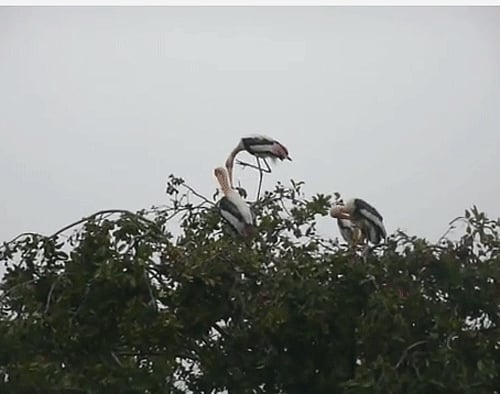
The ongoing flora and fauna survey by green groups at Kaikondrahalli lake has led to the identification of a variety of new species.
Around 43 species of birds, 26 species of reptiles and 3,000 plants comprising at least 33 varieties have been identified during the survey that started about seven months ago. Volunteers and local citizens were roped in to identify and list the various flora and fauna species.
The survey was carried out by the Mahadevapura Parisara Samrakshane Mattu Abhivrudhi Samiti (MAPSAS) and the United Way of Bengaluru (UWBe), a volunteer-led non-profit body.
The survey entailed taking pictures, noting down the day when the species was spotted and educating the community about them.
Some of the bird species spotted were White-browed Wagtail, Greater Coucal, Red-wattled Lapwing, Pied Kingfisher.
Exotic flora spotted include ‘Jali Mara’, ‘Nerale Hannu’, Singapore Cherry, Pink Lapacho and Wild Date Palm.
Environment experts such as Gerry Martin, Lionel Sujay Vailshery, Harini Nagendra and Subbu Subramanya guided the volunteers.
Martin, a researcher and conservationist, said: “The lake is valuable and has varied species of flora and fauna. Last winter, I observed a flock of pelicans. This is an indicator of a healthy ecosystem.”
He added that apart from 26 species of reptiles that included turtles, lizards and snakes, around 11 species of frogs were identified. Residents maintain that the waterbody was once barren land filled with overgrown weeds and blocked inflow and outflow canals due to encroachments. The only saving grace was an acacia grove which attracted bird life.
But things gradually changed and the lake started to transform once restoration was taken up by the Bruhat Bangalore Mahanagara Palike (BBMP) with support from local residents and MAPSAS in 2008.
Harini Nagendra, an environment expert, said: “The lake restoration work continued till 2011. The MAPSAS contributed local biodiversity-friendly seedlings to plant around the lake, due to which the flora is rich now. There were birds earlier, but only a few. Now that efforts are put in, the biodiversity is incredible.”
Meanwhile, the UWBe which currently maintains the Palike-owned Kaikondrahalli lake, is planning to survey other lakes of the City.
